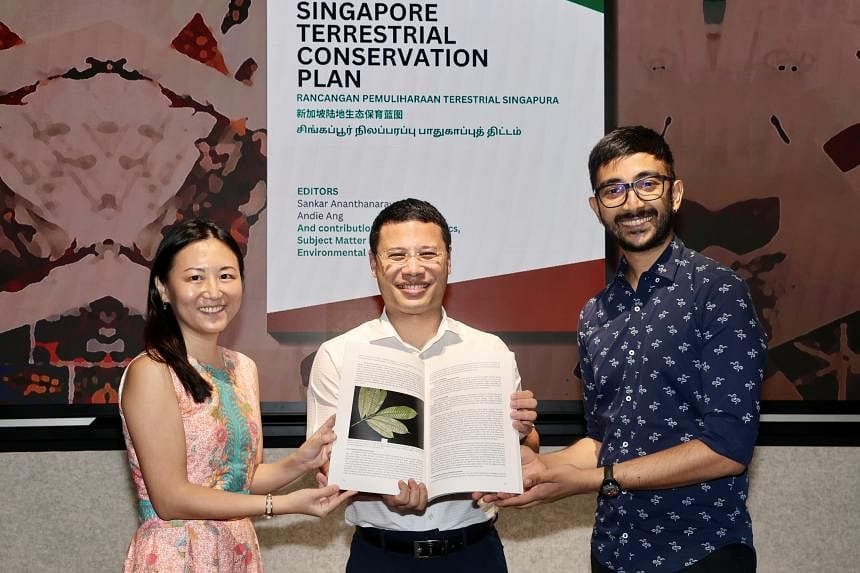Govt to study suggestions from scientists, conservationists to protect nature: Desmond Lee

Source: The Straits Times
Author: Ang Qing
SINGAPORE - The Government will "carefully" study recommendations to protect nature here by nearly 40 conservationists and local scientists, said Minister for National Development Desmond Lee.
These suggestions include studying the protection of Mandai and Tagore forests as nature parks, improving an islandwide ecological profiling exercise to map how Singapore's land-based habitats are linked to one another, and ensuring that environmental impact assessments are mandated by law.
Mr Lee, who is also Minister-in-charge of social services integration, was speaking on April 28 at the launch in the Central Public Library of the Singapore Terrestrial Conservation Plan that maps the state of biodiversity here and consolidates aspirations of the nature community.
He said: "The passion and support of the community remains the cornerstone of nature conservation in Singapore."
Mr Lee outlined previous collaborations between the Government and nature advocates, like the gazetting of Sungei Buloh - a haven for migratory shorebirds discovered by the Nature Society (Singapore) - as a nature reserve in 2002.
The 171-page book, helmed by Herpetological Society of Singapore co-founder Sankar Ananthanarayanan and primatologist Andie Ang, took about three years to compile. It is based on discussions with nature advocates including academics from the National University of Singapore and Nanyang Technological University.
Mr Sankar said: "One of the main priorities (in Singapore) right now is... to recover a lot of the species that are rare or even lost in Singapore."
This includes the critically endangered Raffles' banded langur, a native leaf-eating monkey that can only be found in Singapore and Malaysia, with Tagore forest as one of its habitats. The forested area is slated for housing at the moment.
Since the birth of a baby in the past few months, the population of these monkeys here stands at 76.
"What many of the authors have called attention to is that we should also be focusing on re-establishing functional ecosystems, not just the species but also the processes that take place inside the ecosystem," added Mr Sankar.
Recognising the competing uses for sites in land-scarce Singapore, he and Dr Ang noted that there needs to be a deeper understanding of all biodiversity and the spaces to know how best to protect them.
This includes forested land controlled by the Defence Ministry like the Mandai and Tagore forests, as well as the Western Catchment forest.
Said Mr Sankar: "I think what's important to recognise is that there is biodiversity value in spaces that are not protected for biodiversity reasons.
"The Western Catchment forest is not protected for its biodiversity value, but it has intrinsic value; the problem is that we don't fully understand it."
